
What is more New York than Bagels, you might ask? Well, they are a symbol of the City, but they are not from New York! Bagels, yummy, delicious bagels, were brought by Polish (catholic and Jewish) immigrants from eastern Europe in 18th and 19th century. The first known mention of the bagel, in 1610, was in a written community laws in Kraków, Poland. Nowadays you cannot imagine New York, during the rush hour, and the huge lined to all bagel’s stores, waiting just to get a freshly baked, sometimes still warm bagel with smear (thinly spread of cream cheese, or other spreads).
The dough for the basic bagel, is pretty much the same in most of the flavor combinations. He exceptions will be: whole wheat and pumpernickel, because they require different types of flour (not the white one). The second category will be the rainbow bagel, which is made partially the same way, as the others, but at the next step the dough is divided, and brightly colored, using food colors and dyes.
So, the basic, traditional bagel dough includes wheat flour, salt, water, and yeast leavening (it can be made with commercial dry yeast, or by using sourdough technique), with dairy component (milk, butter), and eggs. The traditional recipes ask for sweetener, need to be added to the dough, like: barley malt (syrup or crystals), honey, high fructose corn syrup, or sugar.
When the dough is ready, and needed for enough amount of time, so the gluten has a chance to developed properly. Each bagel should be made by hand. From the long strip of dough, rolled up, joined by the ends, and left with the round hole in the middle. The form bagels must be left proofing, for at least 12 hours. Again, when they are ready, they are going for a quick bath (1 min to 1,5 min) in a hot water (which may contain flavorings such as lye, baking soda, barley malt syrup, or honey). After the bath, the bagels are finally ready to be baked. They go to the oven, in pretty high temperature (between 175 °C and 315 °C = about 350–600 °F).
Following all these steps, ill assure that the dough is made in a proper manner, and it will guarantee, that characteristic bagel taste, chewy texture, and shinny skin on the outside.
*MOST POPULAR BAGEL FLAVORS*
Everything

the name suggests that is this type of bagel has everything. you can sa “all in one”. It refers to the mix seeds topping, added after the bagel. The dough is still the basic one (the best at its simplicity). The mix toppings traditionally include: poppy seeds, sesame seeds, onion flakes, garlic flakes, pretzel salt, and pepper.
Poppy Seed
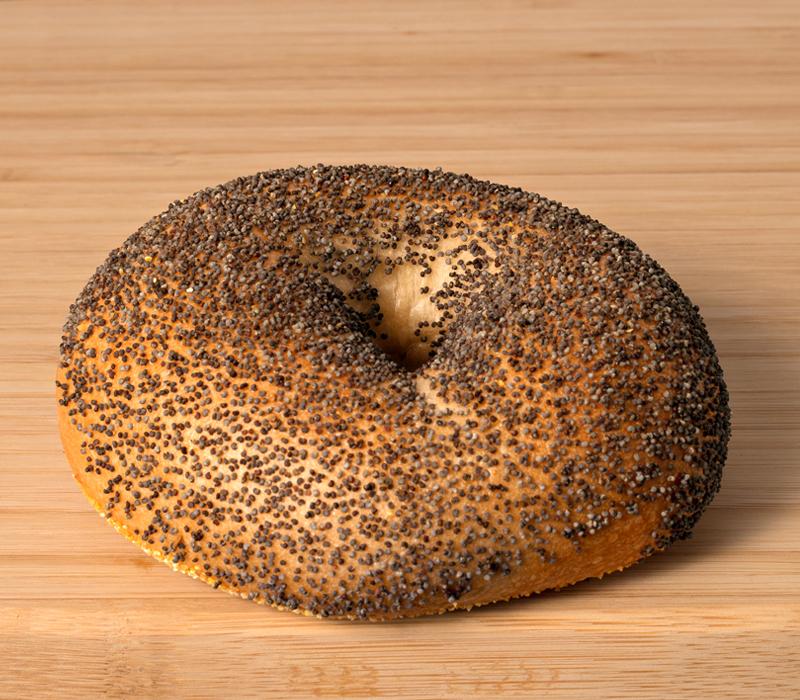
another bagel, with the name pointing out to the type of topping, without disturbing the perfectly balanced yeasted dough. Generous number of poppy seeds are added to the bagel. It gives the bagel, crunchy sensation, with sweet taste of poppy seeds.
Garlic

traditional bagel yeasted dough, where the top is coated in seasoned garlic powder (sometimes can be in a larger size than fine, garlic granules). The dry garlic powder addition and aroma is not overpowering, nevertheless, it gives the bagel extra edge, flavor wise.
Pumpernickel
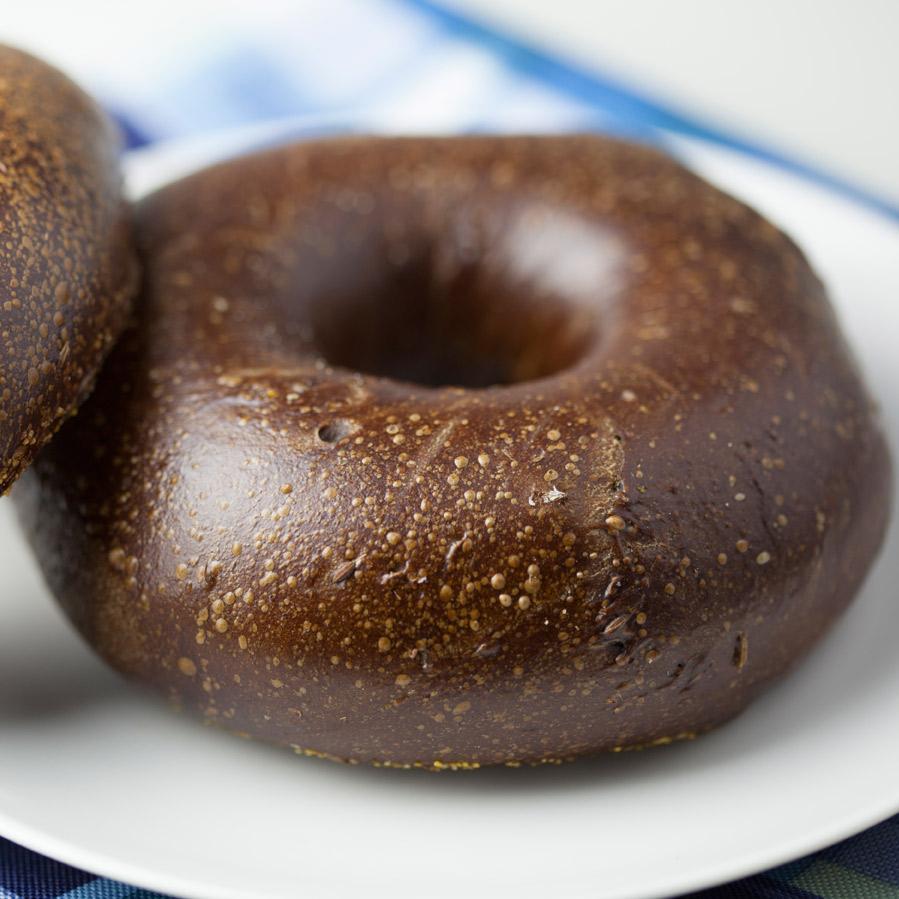
pumpernickel bread is a German variety of a Rye bread. Deep dark color, reach, sweet flavor. All of that is now transformed in the shape of the bagel. It can be made, with regular dry yeast, as well with sourdough starter, that will result in little tangy, and molasses flavor profile. Pumpernickel is personally one of my favorite types of bred.
Cinnamon and raisin
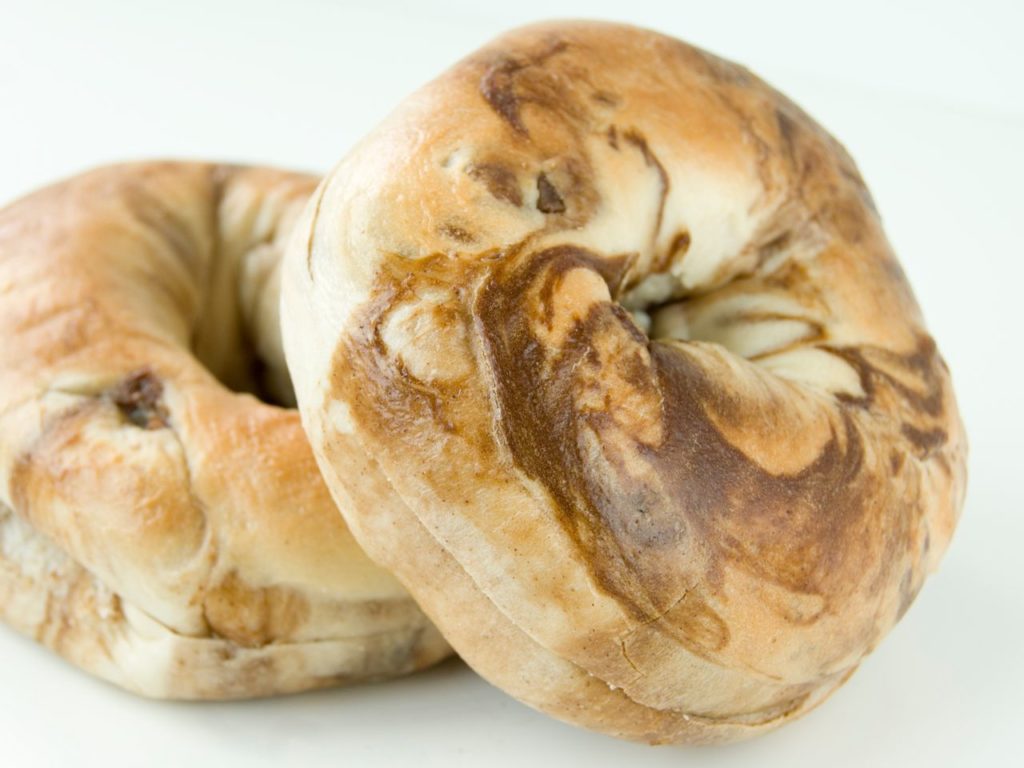
traditional bagel dough is mixed before proofing with ground cinnamon and raisins. After the bread is fully baked, that’s addition created sweet pockets of flavor, made from raisins, and beautifully marble look, thanks to the cinnamon swirls running through the dough.
Blueberry
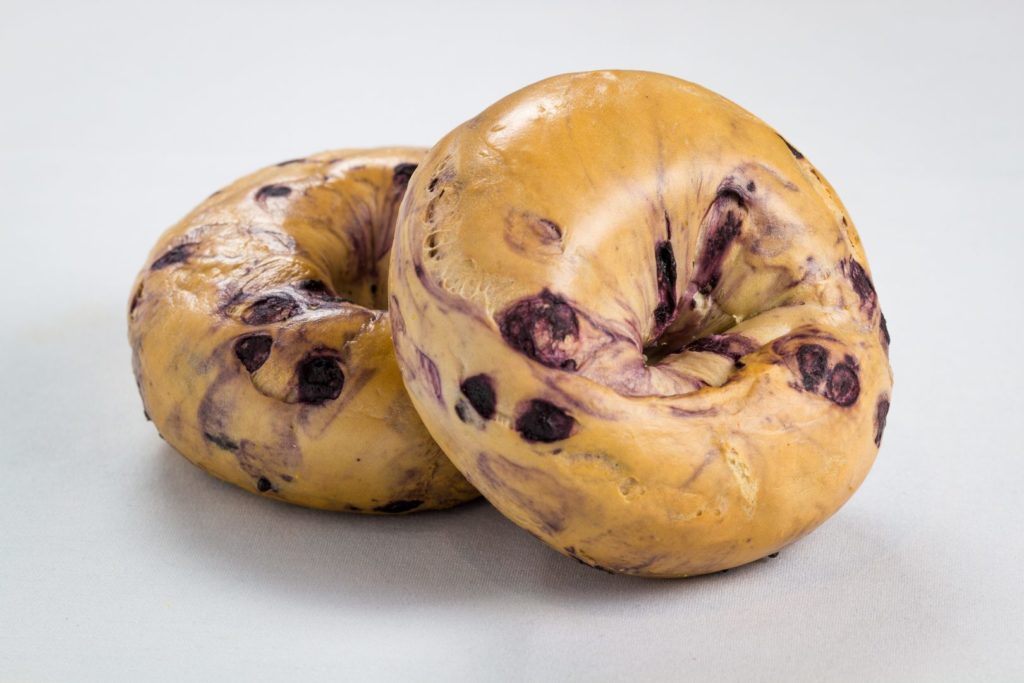
basic bagel dough mixed with fresh Blueberries. Some of them can keep their shape during baking, while the other bursts, creating large splashes of color in finish product, as well additional layer of sweetness.
Sesame Seeds
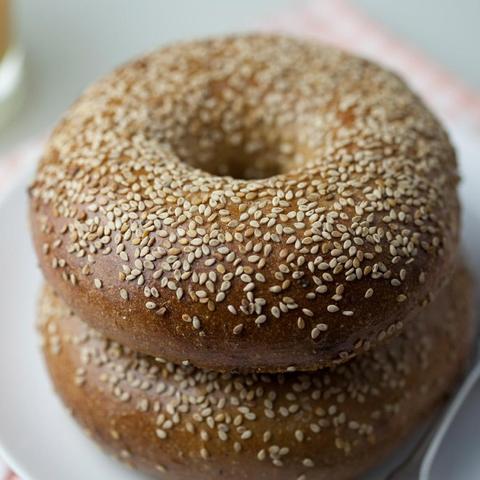
basic dough for the bagel, made in the classic way, and topped with a generous amount of white sesame seeds. They give the bagel extra texture and nice flavor component.
Plain

as the name suggests, this is the basic, variety. Without additional ingredients, mixed with the dough, or added on top, you can fully enjoy the taste of well-made bagels, and appreciate its taste and structure to the fullest. Simplicity at its best.
Oat bran
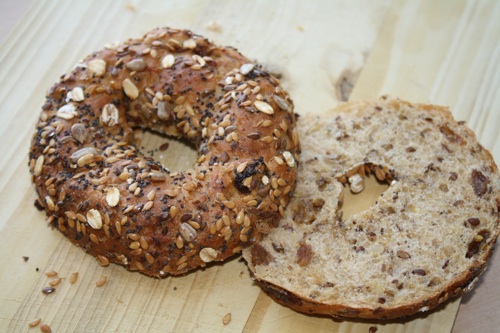
traditional yeasted dough for the bagel, with a slight modification. Part of the required flour is being replaced by Oat bran (since it does not have gluten, it cannot be fully substituted for flour). Then the bagel creation method is the same one. The ready bagel is usually topped with rolled oats or mix of seeds. The oat rans, give the bread nice texture, making it a little bit healthier at the same time.
Whole Wheat
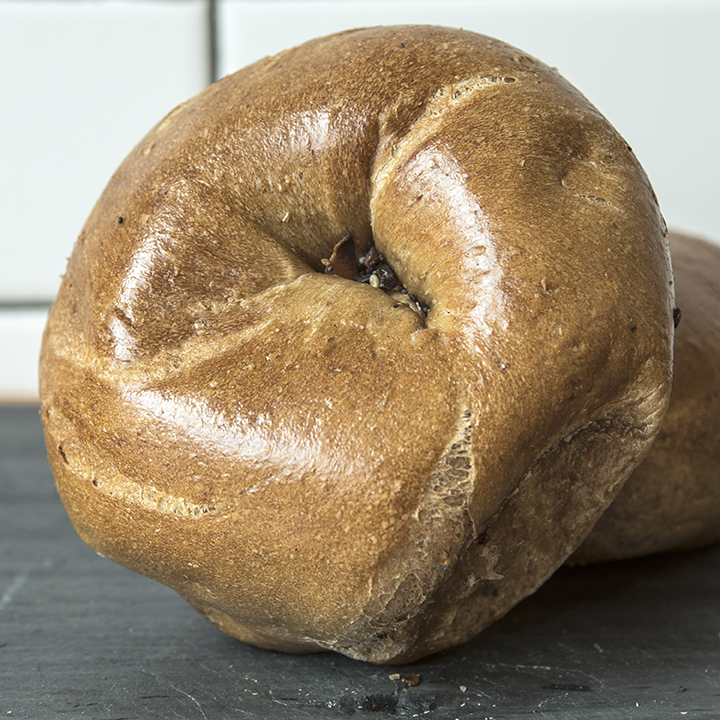
the dough mixture is made with whole wheat flour, in compare to the white one (used in traditional recipe). Everything else, is made the same way, creating nice chewy texture, in a little darker color, and a little richer flavor.
Pretzel
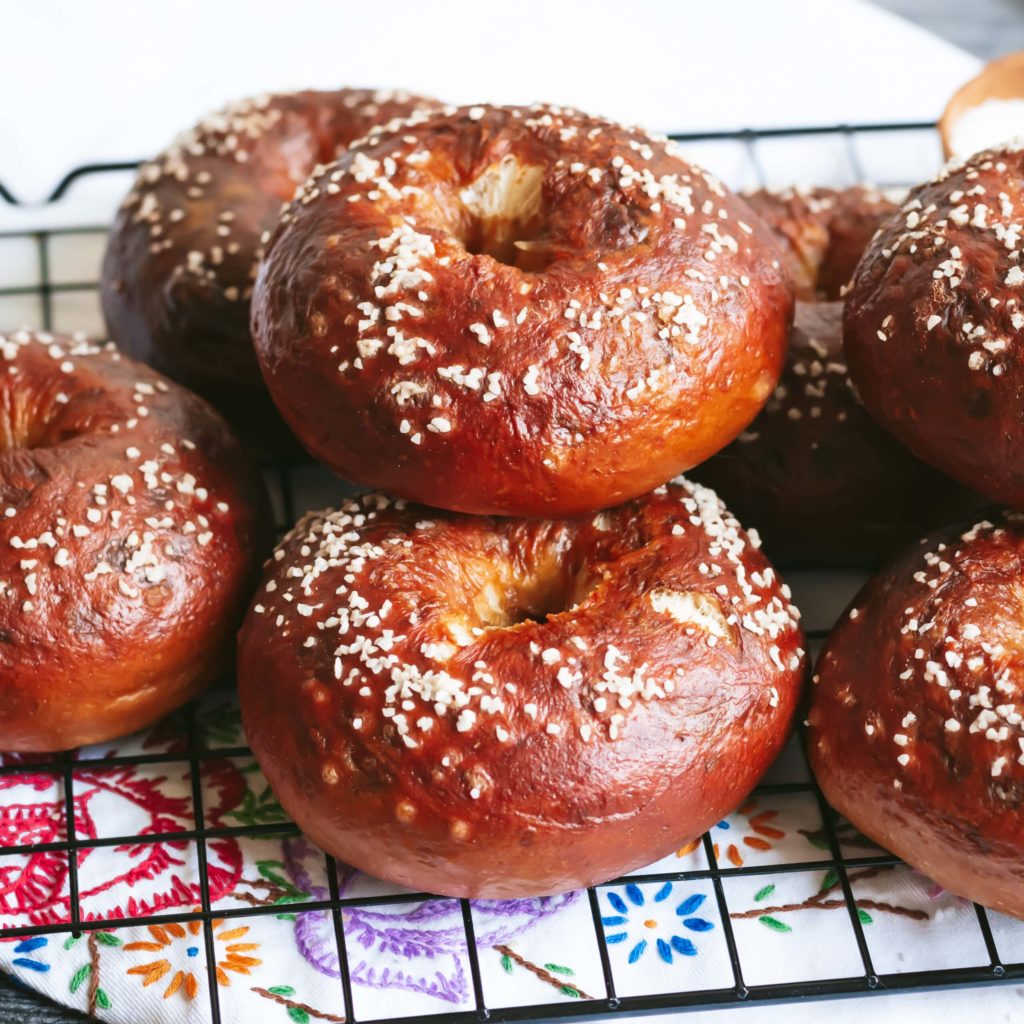
traditional bagel dough made with white flour. After the dough was proofing, the form bagel is swiftly dipped with boiling water with addition of baking soda. 1 minute is enough. That is enough to ensure that while baking, the bagel outer skin will develop that characteristic dark in color pretzel look. Usually sprinkled with large crystals of salt, for a better visual effect.
Jalapeno Cheddar cheese
the basic dough is mixed before proofing with finely (or chunkier) chopped jalapeños, and shredded cheddar (from mild to extra sharp, depending on the taste). The dough is proofed and baked. there is in fact one more version, of making them. The ready to be baked bagel, are topped with shredded cheddar cheese, and slices of fresh jalapeños. Whole the bread bakes, the cheese melts on top, creating a crispy, cheesy, and spicy coating.
Onion
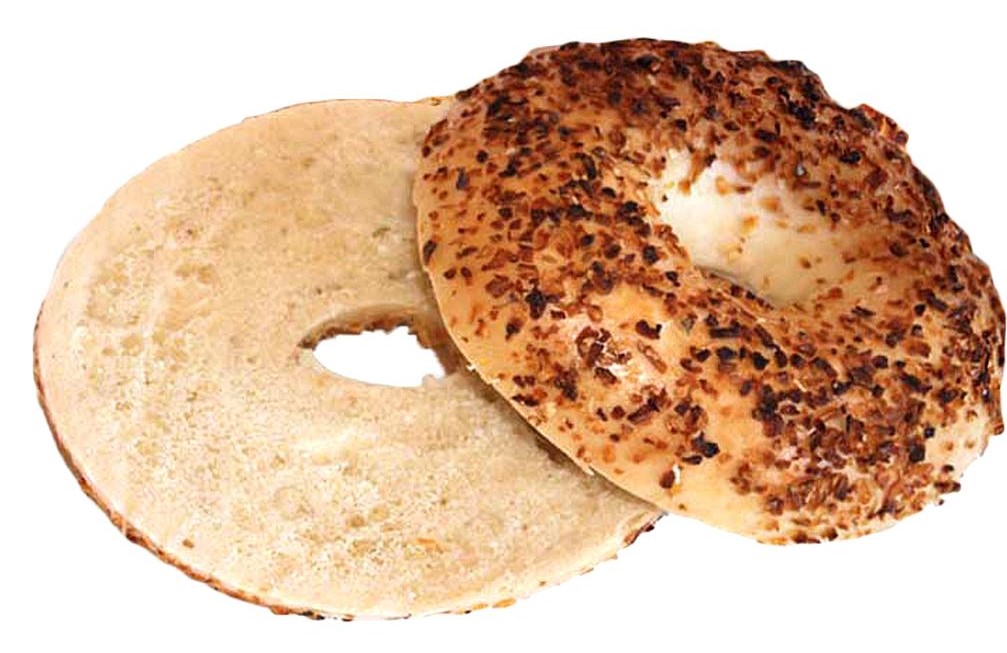
very comparable idea like with the garlic flavored bagel. The standard bagel dough mixture is topped with seasoned onion powder (or onion granules). In the ready bake, it brings out smoky flavor on the onion.
Twisted
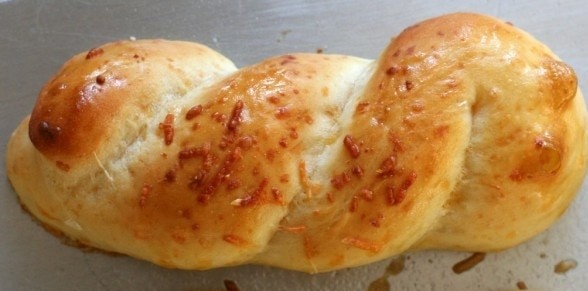
or Bagel Twist, a relatively invention (compare to the age of traditional round bagels), brought by Dunkin Donuts chain. The dough is mixed with shredded White Aged Cheddar. But the main difference comes in the shape of it. It is not round. It looks like two strands of dough are twisted around each other, stretching the shape into longer looking two strand stick.
Rainbow
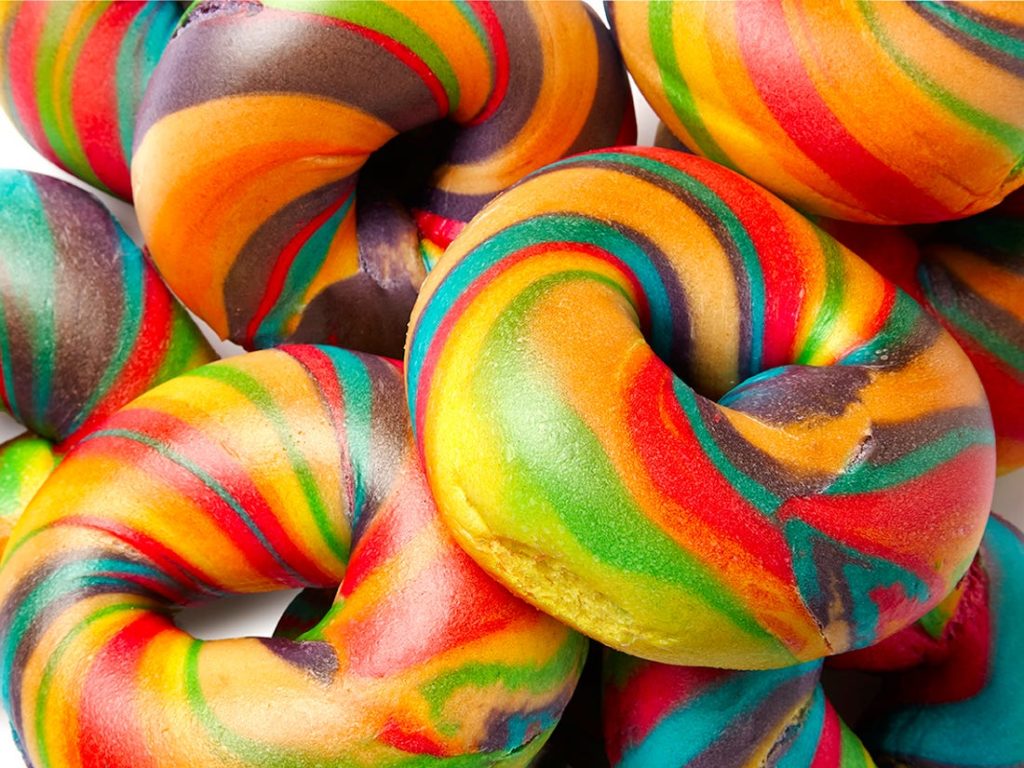
when you are holding this unique looking bagel, you might think that is there is absolutely nothing traditional about it. Well, the truth is, that is the dough, is the traditional mixture, used in so many varieties. The difference is that the dough is being divided into separate portions, and color using food dyes. Cut into even strips of dough, and joined all together, creating colorful creation. Its still bagel, but exceptionally looking one.
Bialy
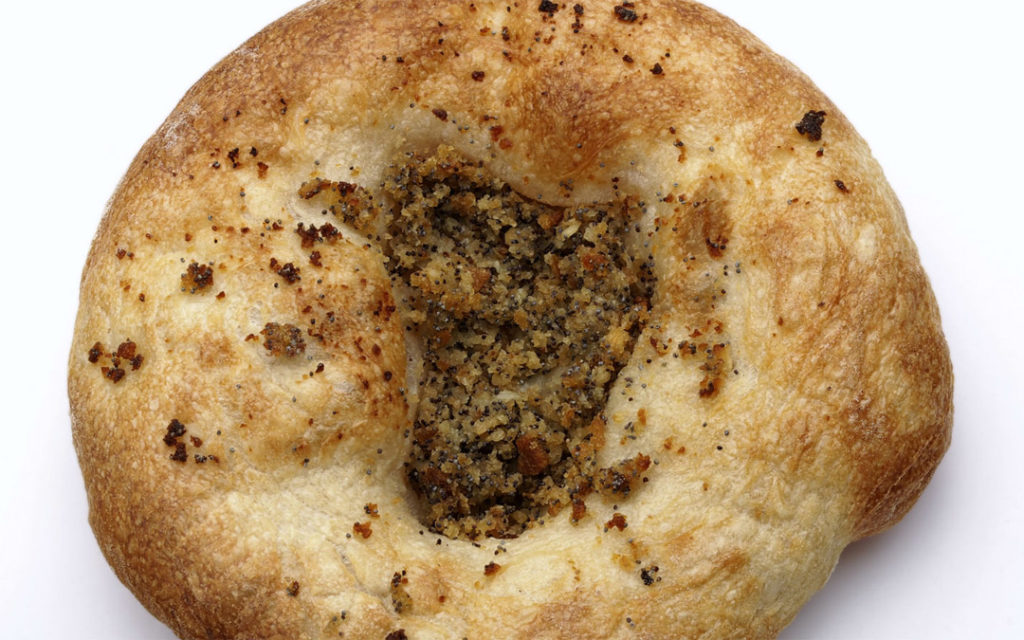
the name derived from the city of Białystok in Poland. It was a food of Polish Jews, and was brought to New York City in 1800s, by immigrant families. Made from yeast dough, chewy in texture, like traditional bagel. Although, Bialys are not boiled prior to being baked, and they do not have a full hole in the middle. They have more like a depression, that is us generally field with sautéed onions, garlic, poppy seeds, or breadcrumbs.
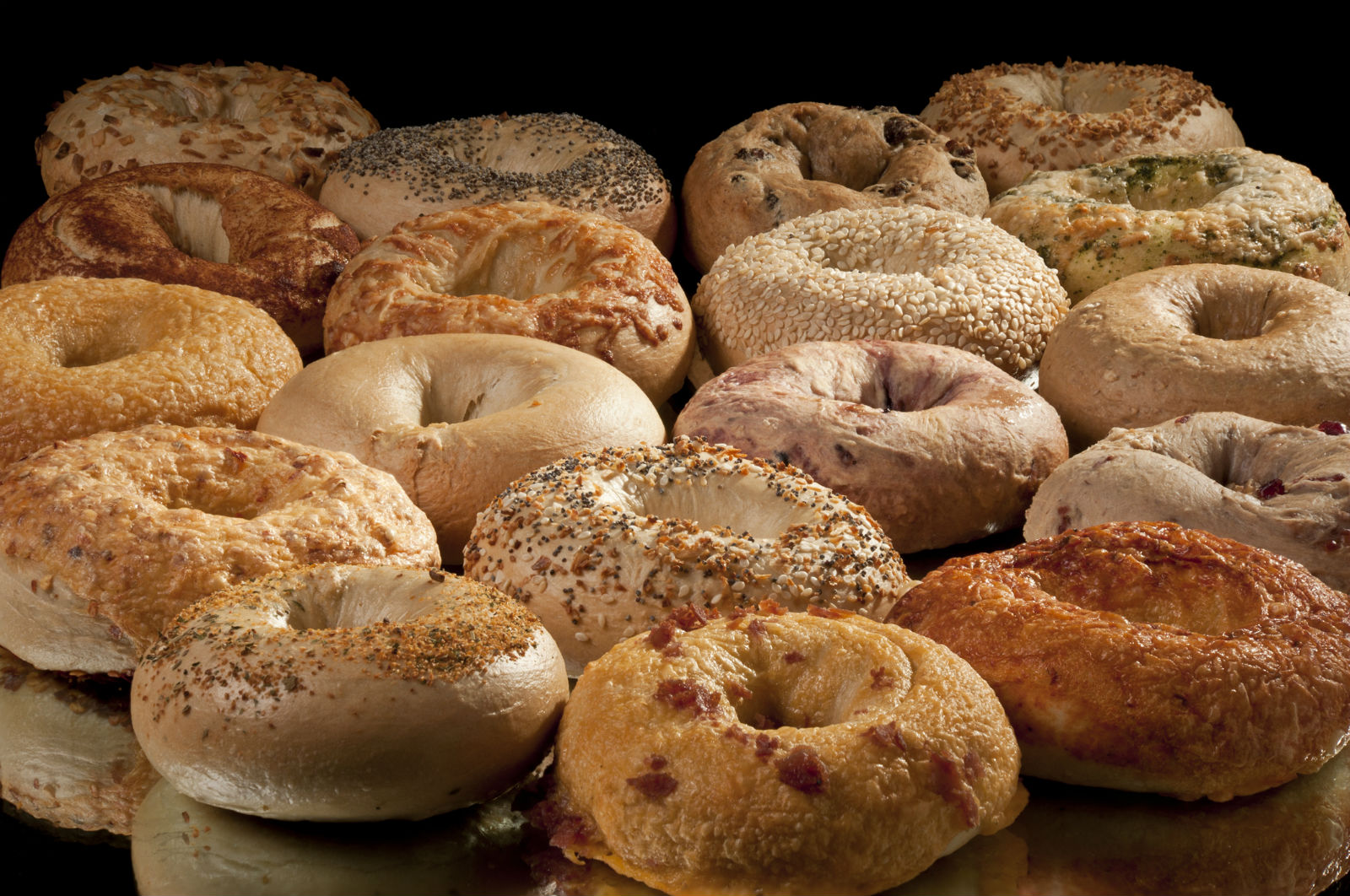
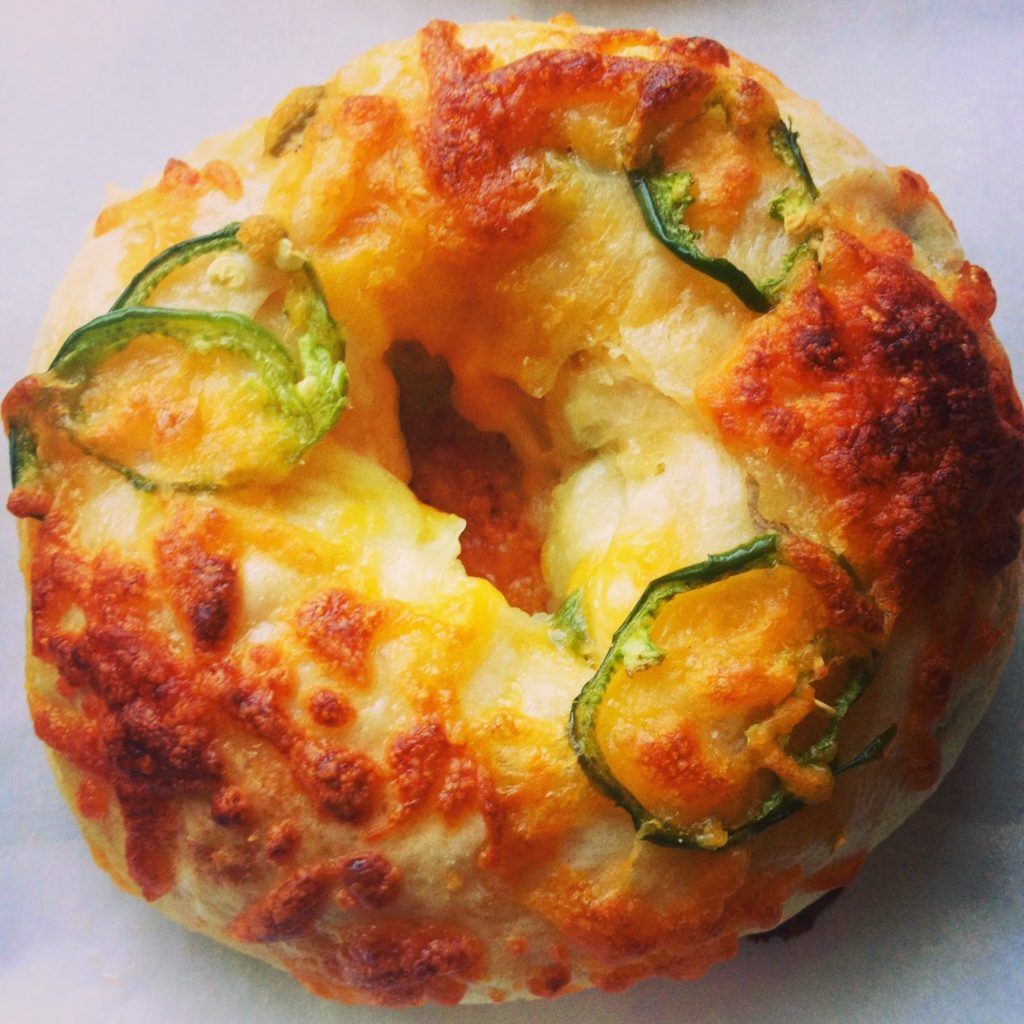
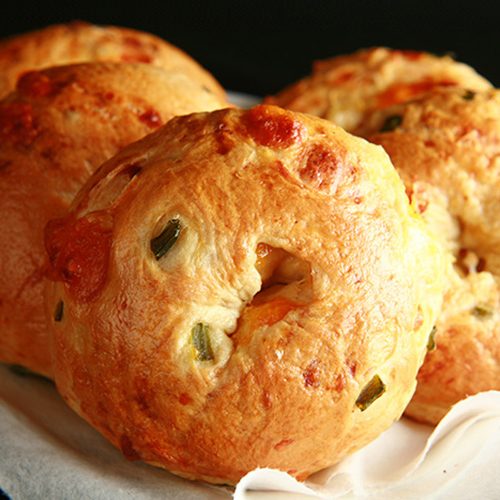


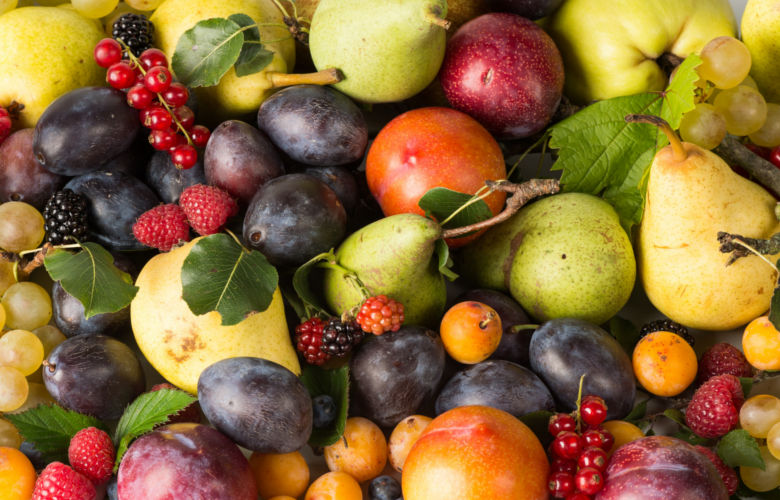
Może będzie mi dane kiedyś spróbować…
tez mam taka nadzieje, jak sie to cholerstwo skonczy